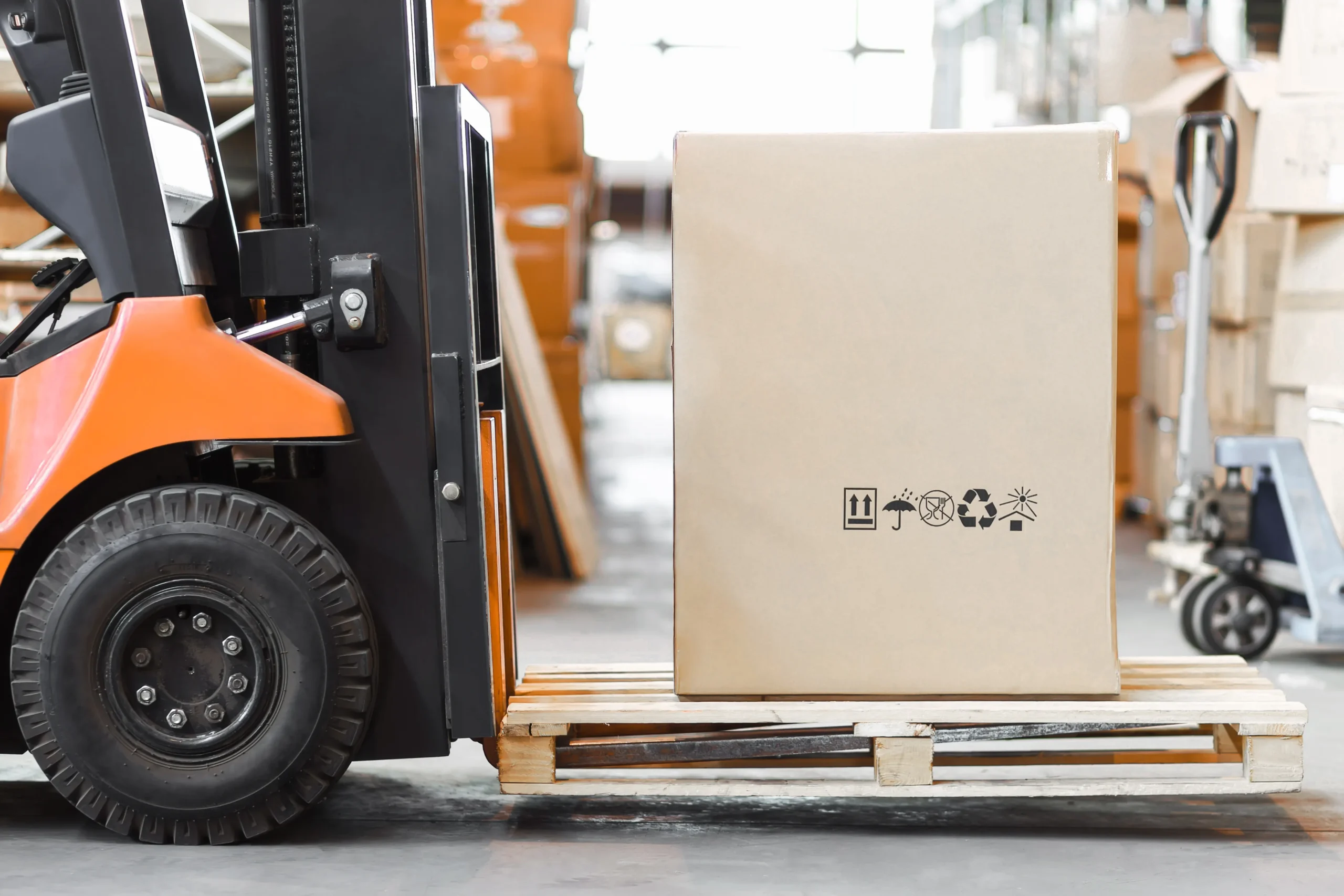Want the eBook version of The 5 Biggest Hidden Shipping Inefficiencies (and How to Fix Them)?
Hidden shipping inefficiencies are costing you daily.
Shipping costs and surcharges continue to rise in 2025, driven by economic uncertainty, global complexities, and ever-changing market conditions. These pressures make efficiency more critical than ever. Every extra charge—whether from rate increases, operational inefficiencies, or service mismatches— eats into your margins. While rate hikes may be out of your control, optimizing your shipping strategy isn’t.
Many businesses are leaving money on the table, often without realizing it. Our data shows that more than a third (36%) of total shipping spend goes to accessorial fees, while service mismatches and outdated contracts add even more waste. At the same time, customers expect fast, affordable shipping, with 65% saying they’ll abandon their cart if delivery takes too long. That leaves businesses stuck between rising costs and the pressure to compete on speed.
The good news? There are real opportunities to save money, gain more efficiency, and improve customer service—if you know where to look. Here, we break down five key areas where hidden shipping inefficiencies could be costing you and how to fix them so you can keep margins and customer satisfaction in check.
Hidden Inefficiency #1: Avoidable Accessorials
Why you’re spending more than you should on avoidable fees.
Accessorial fees are a hidden drain on your shipping budget, quietly adding up with every invoice. Late payment penalties, address corrections, and other surcharges may seem like minor costs, but over time, they take a serious toll on your bottom line. In fact, our data shows:
- 57% of shippers incur late payment fees, costing an average of $6,938 per year
- 92% of shippers face address correction charges, adding up to $6,607 annually
- 36% of total shipping spend is tied up in accessorial fees that could potentially be avoided
Most businesses don’t realize they’re being hit with these fees—or understand why they’re happening. Carriers aren’t exactly transparent about when and how these charges are applied, and invoices can be difficult to decode. If you’re not actively monitoring and analyzing your shipping data, these fees will keep piling up.
Action: Gain Greater Visibility to Reduce Accessorials
To take control of accessorial fees, you need better visibility and proactive management. SiftedAI automatically identifies problem areas and serves up clear recommendations—so you can take action without sifting through endless invoices or shipping reports.
- Late Payment Fee Detection – Get proactive alerts about incurred late fees and recommendations to resolve them before they become costly. No need to dig through invoices—Sifted flags them for you.
- Repeat Address Correction Alerts – Identify recurring address errors automatically and receive recommendations to fix them at the source. Even minor inconsistencies—like abbreviating “Street” as “St.”—can trigger charges on every shipment.
- Profile Monitoring – Sifted tracks your accessorial spend across carriers and highlights areas where you’re overspending, offering clear steps to reduce unnecessary fees—without manual analysis.
How Markforged Reduced Accessorial Fees with Multi-Carrier Visibility
Managing shipments across multiple carriers made it difficult for Markforged, an additive manufacturing company, to track and control accessorial fees. With each carrier requiring a separate dashboard, identifying and addressing unnecessary charges was time-consuming and inefficient.
By consolidating all carrier spend into a single dashboard in Sifted, Markforged gained full visibility into their shipping data, making it easier to spot avoidable fees and take corrective action before costs escalated. As a result, they reduced late fees by $10,822 from 2022 to 2023—a direct impact on their bottom line.
Hidden Inefficiency #2: Unnecessary Premium Shipping Costs
Are you overpaying for shipping speeds you don’t need?
Faster shipping comes at a cost, but many businesses are paying for speed they don’t actually need. The issue? Carriers offer multiple service levels, and companies often default to premium options without realizing a lower-cost alternative could deliver in the same timeframe.
Our data shows that:
- 88% of shippers had opportunities to save by optimizing service types
- $13,333.46 per year is the average available savings to clients who optimize their service types
Shippers often assume they need express services to meet delivery expectations, but in many cases, ground or economy services could get the package there just as quickly at a fraction of the cost. But, many companies overspend simply because they lack visibility into actual transit times versus promised delivery dates. Without data-backed insights, businesses risk unnecessary premium charges with no added benefit to customer satisfaction.
Action: Match Cost to Delivery Needs
Avoiding unnecessary shipping costs starts with better visibility into transit times and service selection. By analyzing historical shipping data, businesses can identify where service levels can be downgraded without impacting delivery speed, enabling quick and meaningful savings.
Sifted’s Service Type Optimization helps businesses:
- Compare service levels—Ground vs. 2-day vs. 3-day vs. overnight—to ensure they’re not paying a premium unnecessarily.
- Identify cost-saving opportunities with clear, data-backed recommendations—surfaced directly on the dashboard—when a lower-cost service would still meet delivery expectations.
- Make small adjustments with a big impact, reducing unnecessary spend while maintaining customer satisfaction.
Why pay for speed you don’t need? Optimizing service selection is a quick win that immediately improves the bottom line.
How Beddy’s Cut Shipping Costs Without Sacrificing Speed
As Beddy’s scaled, they needed a more strategic approach to reducing shipping costs. Using Sifted’s Service Type Optimization, they analyzed carrier options and identified opportunities to switch shipments from express to ground, saving $15.31 per package without impacting delivery speed.
“We’ve been able to make better informed, data-backed decisions based on the Sifted analysis tools.”
— Tim Kelley, Director of Operations, Moxie Logistics
Hidden Inefficiency #3: Costly Oversize and Overmax Fees
Are oversize fees eating into your profit margins?
Shipping large or heavy items with the wrong mode can drive up costs fast. Many parcel carriers don’t want oversized packages (because they are inefficient to ship) in their networks, so they impose steep surcharges—often over $1,000 per package—as a deterrent. For businesses shipping high volumes of large or bulky items, these fees can add up to tens of thousands of dollars per year.
If you ship heavy and/or bulky products, be aware that Additional Handling & Oversize/Large Package Charges have all increased over 20% in 2025 for FedEx and UPS, with most Zones seeing a 26 to 29% increase.
Unfortunately, many businesses default to parcel carriers without realizing that freight, LTL, or specialized heavy-item services could be far more cost-effective. While these alternatives may have a higher base rate than parcel shipping, they don’t come with massive overmax penalties, making them the better long-term solution.
Action: Choose the Right Mode for Large Shipments
To avoid oversize fees, businesses need clear visibility into package dimensions, weight limits, and carrier restrictions. Here’s how to optimize shipping mode selection in Sifted:
- Mode Type Optimization – Determine whether parcel or freight is the most cost-effective shipping method based on package size and weight.
- Unauthorized Oversize/Overmax Fee Detection – Automatically identify shipments incurring these high fees and get recommended alternative shipping modes before costs spiral. Users can also enable notifications for real-time alerts via email or the dashboard when these fees are incurred.
- Spend Summary – Get always-on monitoring with dashboards breaking down your DIM weight impact and more.
With the right data, shippers can proactively flag costly oversize shipments, switch to more appropriate carriers, or even challenge incorrect charges from parcel carriers—ensuring they aren’t paying more than necessary.
Hidden Inefficiency #4: Package Size Hidden Costs
DIM fees are inflating your shipping costs.
Dimensional (DIM) weight pricing can be a hidden profit killer. Many companies don’t realize they’re paying for more than just weight. Carriers charge for the total space a package takes up in their network—even if it’s unnecessarily large.
Carriers impose dimensional (DIM) weight pricing and additional handling surcharges based on package size and weight, meaning even a slight miscalculation can drive up costs. In some cases, shippers get hit twice: once with higher DIM-based shipping costs and again with a package size-related surcharge.
Our data shows that:
- 80% of shippers had package modeling savings available to them last year
- $113,627.01 per year – the average potential cost reduction identified for businesses that could optimize their package sizing
The Sustainability Advantage: Less Waste, Lower Costs
Right-sizing packaging isn’t just about cost savings—it also supports sustainability initiatives by:
- Reducing packaging waste and unnecessary materials
- Cutting carbon emissions by maximizing space in shipping trucks
- Aligning with consumer expectations, as shoppers increasingly value eco-friendly shipping practices—86% of consumers say sustainable shipping and packaging is at least somewhat important when shopping online.
Action: Optimize Package Sizes to Reduce Fees
Sifted’s Package Modeling allows businesses to test different box sizes and configurations before committing to a packaging redesign, ensuring they find the most cost-effective solution. With automated recommendations surfaced directly on the dashboard, businesses don’t have to dig through data to uncover savings opportunities. By simulating changes, you can:
- Identify opportunities to reduce DIM fees and surcharges with recommended adjustments to packaging that maintain product protection.
- Compare cost impact before investing in new packaging materials.
- Avoid unnecessary additional handling charges by receiving alerts when package dimensions exceed carrier thresholds.
With data-backed insights, businesses can confidently optimize packaging, lower costs, and improve shipping efficiency—all without trial-and-error expenses.
“Sifted …allowed me to run box scenarios and look at ways to drive even more cost savings by testing out different weights and DIMs. We used this to save over $500K…” –Sifted Client in Consumer Goods via G2
Hidden Inefficiency #5: Costly Carrier Overcharges
Is your carrier overcharging you?
Negotiating a carrier contract is just the beginning. Staying on top of contract terms, rate compliance, and tier-based discounts is where real cost control happens. But with complex carrier invoices and fluctuating shipping volumes, many businesses don’t realize they’re being overcharged until it’s too late.
Our data shows that:
- 16% of shippers are being charged out of compliance with their negotiated contract rates.
- $40,969.34 is the average savings opportunity for businesses that caught billing discrepancies
- $16,551,613.81 is the total compliance savings available across all Sifted clients
Carrier invoicing is complicated, and mistakes happen frequently. When shipping tens of thousands of packages, even small errors—a missing discount here, a rate miscalculation there—can quickly add up to six figures in unnecessary costs. Without active contract monitoring, businesses may not catch these errors until they’ve already lost significant money.
Action: Proactive Contract Compliance & Monitoring
To avoid overcharges and ensure negotiated discounts stay intact, businesses need visibility into carrier billing and contract terms. Here’s how to stay in control:
- Contract Compliance Audits – Automatically compare carrier invoices against negotiated rates to flag discrepancies before they escalate.
- Tier & Discount Tracking – Monitor shipping volume to ensure you’re meeting thresholds for contract discounts—and avoid unexpected rate increases.
- Contract Monitoring Alerts – Get notified of upcoming contract term expirations or changes that could impact costs.
Carrier contracts typically last around three years, but discounts and rate terms aren’t always locked in for the full duration. If a discount expires or volume drops below a required threshold, rates can quietly increase without notice. Proactive contract management helps businesses catch overcharges before they accumulate, ensure every negotiated discount is applied correctly so you aren’t leaving savings on the table, and stay ahead of contract term expirations and tier adjustments to maintain the lowest possible shipping rates.
Eliminate Shipping Inefficiencies and Keep Your Operations Optimized
Shipping is no longer just about getting products from point A to point B—it’s a strategic lever that can significantly impact your profit margins and operational efficiency. Yet, many companies are overspending or have other inefficient operational processes in place without even realizing it.
From avoidable accessorial fees and inefficient service types to oversize charges, DIM fees, and contract compliance issues, these hidden inefficiencies can add up quickly—and they’re likely lurking in your shipping profile right now.
But here’s the good news:
Our data shows that companies who optimize these areas save anywhere from tens of thousands of dollars to millions of dollars annually, improve their operational efficiency, and protect their profit margins.
If you want to run a profitable business, you can’t afford to leave this money on the table.
Your next move
Shipping inefficiencies will continue to impact businesses in 2025, but those who know where to look–and have the right tools to optimize–will not only survive but thrive. With Sifted’s recommendations, you don’t have to search for savings or operational improvements—they’re identified for you, with clear steps to act on them.

Ready to cut inefficiencies, improve operations, and maximize savings—without digging through data?











